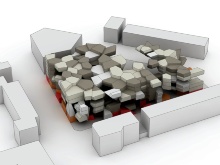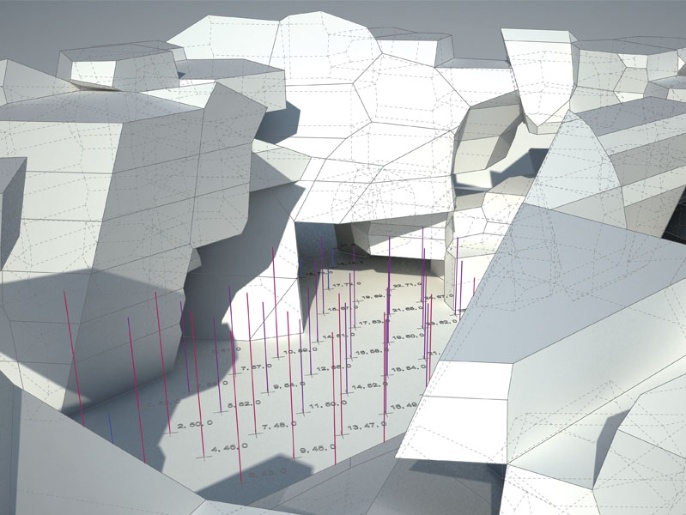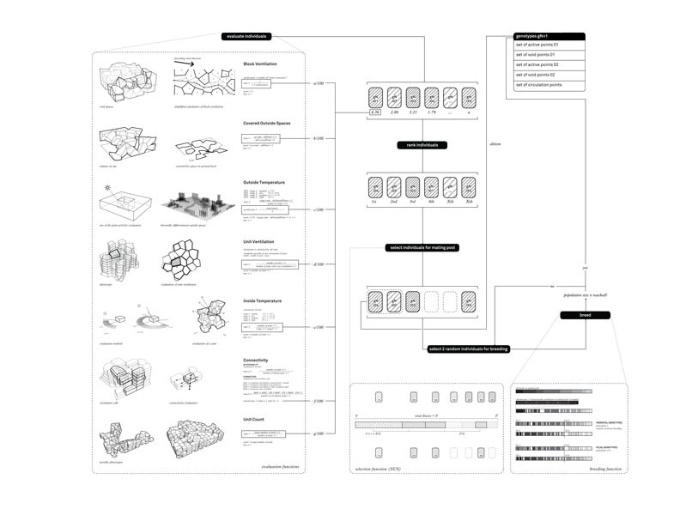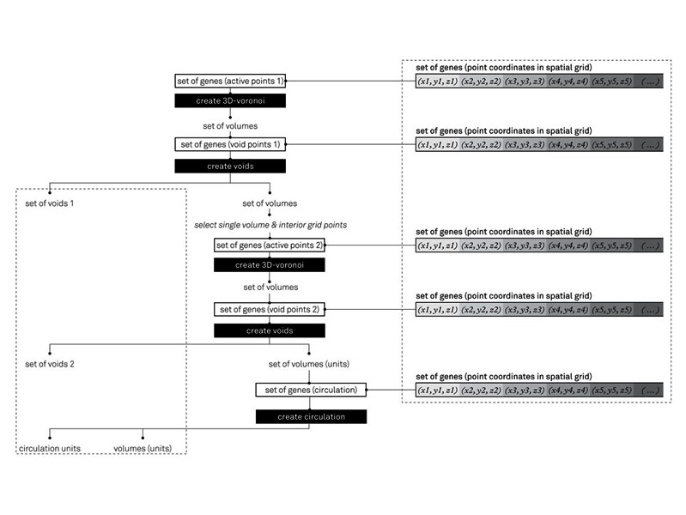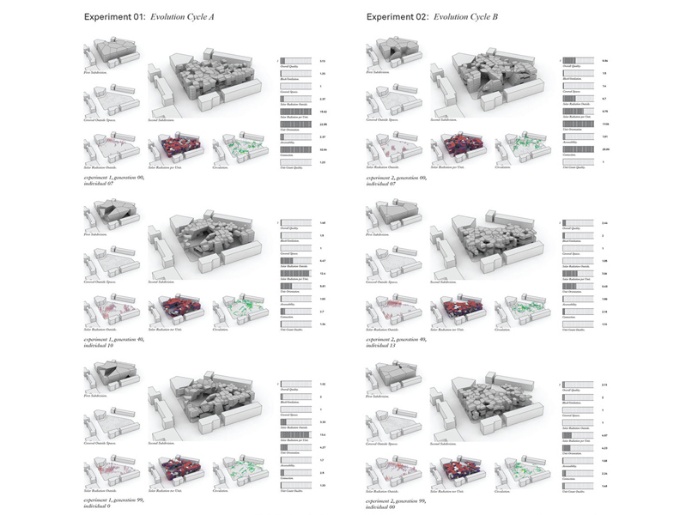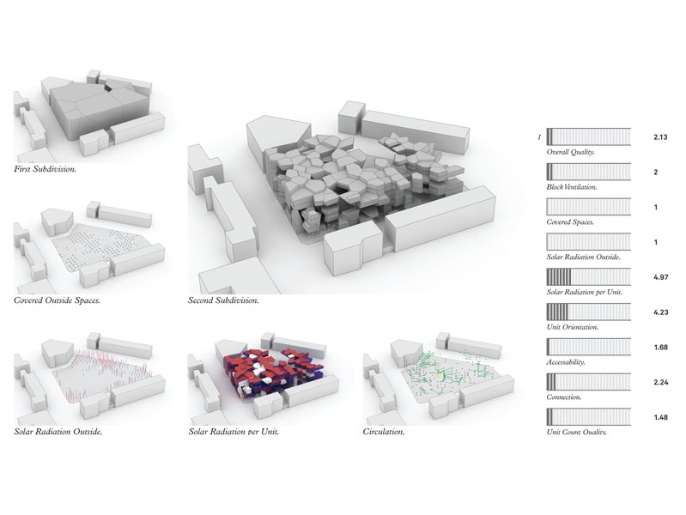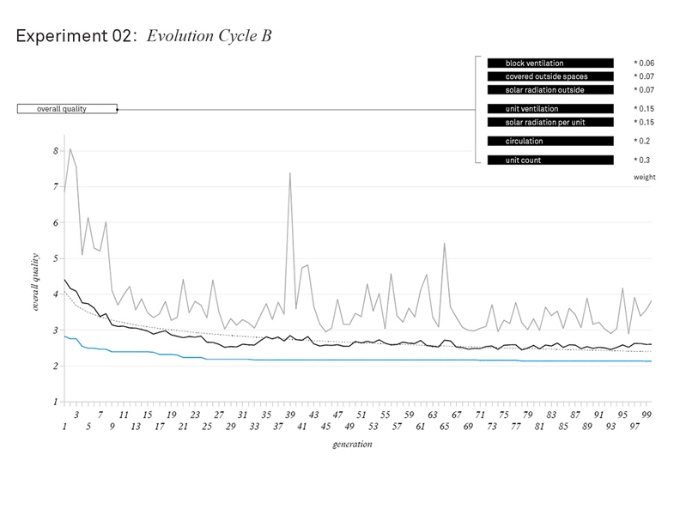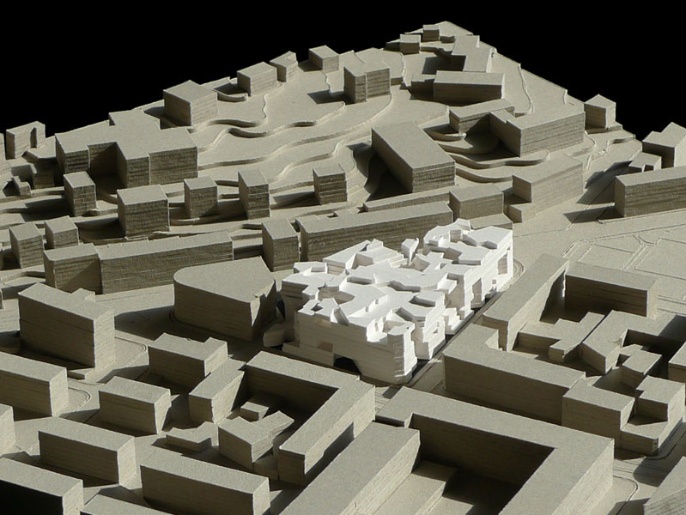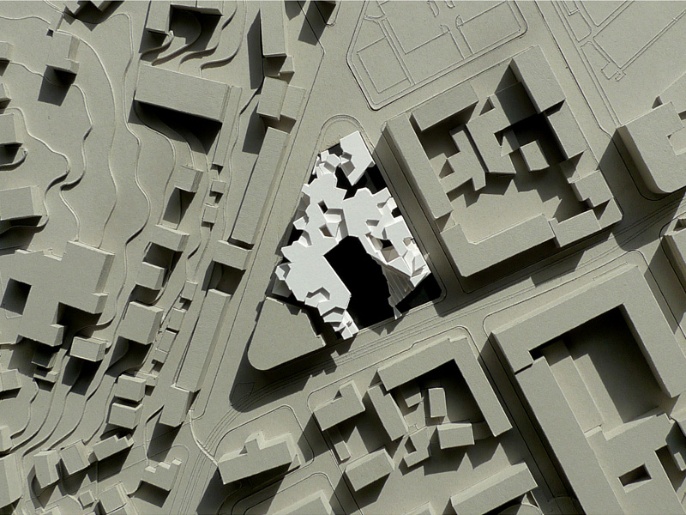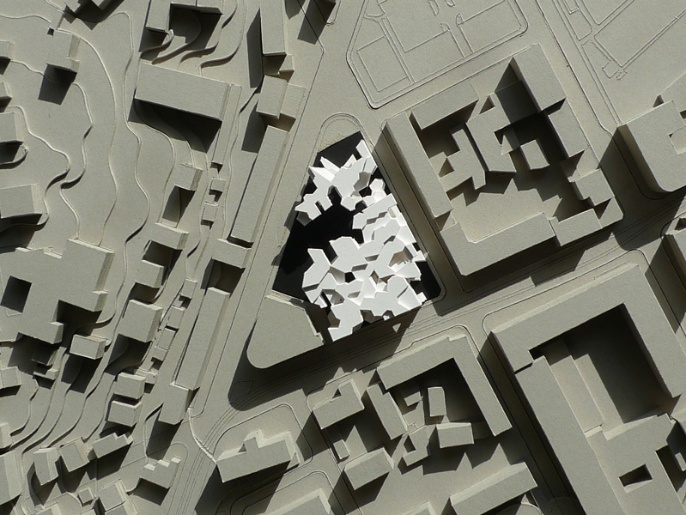The concept of environmental integration is more often than not reduced to the question of lowering the energy consumption of buildings instead of trying to react to the complex reciprocities between buildings and their climatic surroundings. This is formed of a practice which repeats typology and applies technology as a kind of adaption, rather than revisit morphology to develop new principles for the integration of environmental performance to building form.
Such a course towards integration seeks design processes where the “design” and “evaluation” steps can be combined so that solutions are all evaluated with the same level of detail. It is proposed in the research, that evolutionary algorithms be applied to the development of environmentally adapted urban housing morphologies. The work seeks the potential for evolutionary algorithms in early design stages to produce results that already incorporate and anticipate criteria that are introduced in the later design stages of convention design processes. The target is to use EAs to generate solutions for climate-adapted building morphologies that are non-typological but still reach a degree of plausibility in the context of contemporary building methods.
Evolutionary algorithms originally derive from the fields of informatics and engineering but have found application in fields as diverse as economics, art and architecture. In engineering and informatics, they have served as optimization techniques for multi-objective problems over the last few decades. However, it is not the application of such processes as mere optimization strategies that makes them interesting for design processes but rather their ability to generate solutions that transcend constraining conventions and typology, by creating output that is not “planned” within the functions and parameters of the computational process.
The input into the evolutionary algorithm is minimized to a maximum usable volume and a desired number of units. The environment is composed of climatic factors like solar radiation, wind and natural light. Other influences like the structural performance of the building are not considered. The process outputs volumes that form individual units. Together the units form an urban block.
The project focused on the development and testing of the evaluation steps in the evolutionary process. This testing revolved around the precision in values returned from the evaluation process as well as the variable ranking of priority between different criteria. It was also investigated how significantly or insignificantly the general population of individual geometries evolved when different criteria where prioritized.
Each individual is evaluated according to five climatic fitness criteria and two additional criteria. The climatic evaluation takes place on two levels, block level and unit level. On the scale of the block, the cross-ventilation of the overall urban morphology, the amount of covered outside spaces, on the site and the temperature in the outside public spaces, described by the amount of solar radiation that they are exposed to, are evaluated. On unit level, it is evaluated how many units can be naturally cross-ventilated and how much solar radiation the units are exposed to. In addition to the climatic evaluation, two more aspects are evaluated: The connectivity criterion evaluates the accessibility of the units via the circulation volumes. Instead of using existing circulation configurations, the circulation evolves. Furthermore, the unit count criterion is used to evaluate the number of units over the course of the evolution.
The outcome of this research not only produced novel understanding for spatial arrangement in regards to potential for environmental responsiveness, but it also provoked questions in regards to assessing the outcomes of the process. In relation to the defined criteria, the numerical results give a clear performance rating of the overall system. But, in other conditions outside of these criteria, and within localized situations, it was necessary to develop additional tools which could visual such embedded information. These tools allowed for a translation of the morphologies into data sets that could be linked to show certain qualities of the units within the block. In subsequent development, the process was utilized in assigning uses according to the different climatic qualities of the units to be able to compare it to known use distributions.


